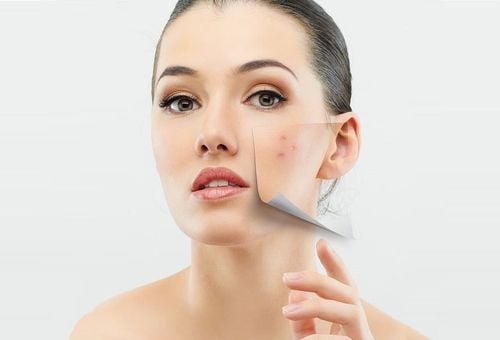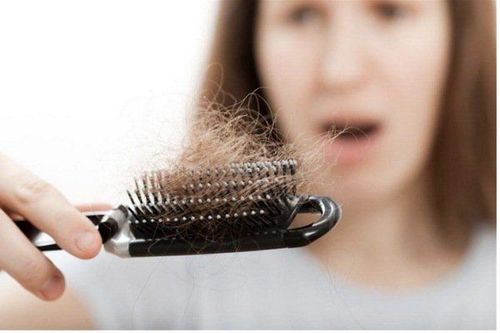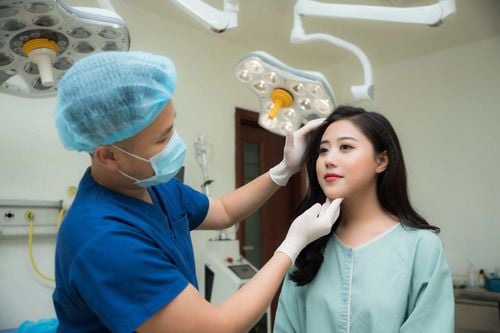This is an automatically translated article.
Effective hair loss treatment starts with finding the cause. For an accurate diagnosis, you should see a dermatologist to determine the cause of hair loss, from which he will advise and give an appropriate treatment plan for each specific case.
1. Overview of hair loss
Hair loss can happen to anyone and it can be temporary or permanent. The cause of hair loss can be the result of heredity, hormonal changes, the aging process or it can be a warning sign of a dangerous disease.
Signs and symptoms of hair loss may include:
Hair thinning on the crown: This is the most common type of hair loss in the elderly population. In men, hair usually begins to recede at the hairline on the forehead. Women often have an enlarged frontal hairline due to hair loss. This type of hair loss is increasingly common in older women as the hairline recedes and causes frontal hair loss. Patchy or circular bald spots: Some people lose their hair and form patchy, circular patches of skin on the scalp. Your skin may be itchy or sore before the hair falls out. This condition can also be observed in the beard and eyebrows. Sudden hair loss: A physical or emotional shock can cause hair to fall out quickly. A small amount of hair can easily fall out when combing or shampooing, or even after a slight tug. This type of hair loss usually causes thinning of the hair overall on the scalp but is only temporary. Generalized hair loss: Some medical treatments, such as cancer chemotherapy, can lead to hair loss all over the body. Hair and hair can usually grow back afterwards. Scaly patches on the scalp: This is a sign of ringworm. Accompanying signs may include brittle hair, redness, swelling, and sometimes a discharge on the scalp. Baldness is a term used to refer to excessive hair loss on the scalp. Hereditary hair loss that occurs with age is the most common cause of baldness.
In men, hair usually begins to gradually fall out on the forehead, creating male pattern baldness. Female pattern baldness tends to fall out in regions. Visit your doctor to find out the cause and early treatment,
2. How is hair loss diagnosed?
Before making a diagnosis, your doctor will likely do a physical exam and ask about your close friend and family's diet, hair care habits, and medical history. You may also have other laboratory tests, such as the following:
Blood tests : This basic laboratory test can be a valuable clue to diagnose the underlying causes. Is hair loss caused by a dangerous disease? Traction test: The doctor will gently pull a few dozen hairs to see how many are lost. This helps determine the stage of the hair loss process. Scalp biopsy: A few small samples of skin or hair loss are collected to examine and observe the hair roots under a microscope. This can help determine if an infection is the cause of your hair loss. Light microscope: Your doctor uses a special instrument to examine the trimmed hairs at their base. Microscopy helps to detect possible disorders of the hair shaft.
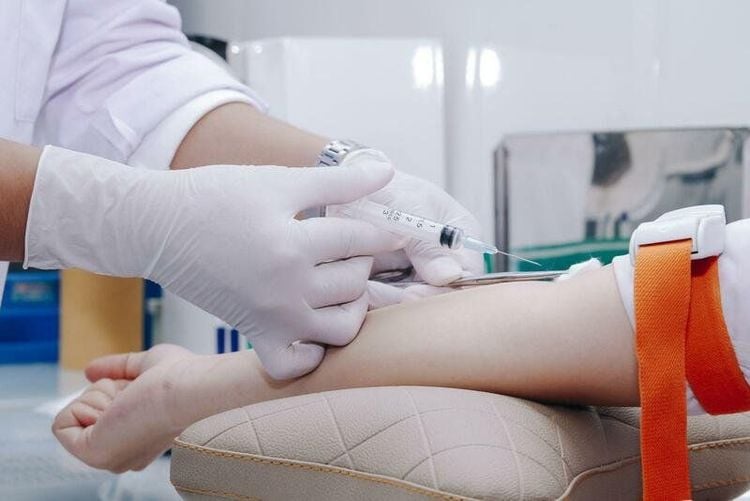
Xét nghiệm máu giúp bác sĩ chẩn đoán và chữa rụng tóc
3. Ways to cure hair loss and prevent hair loss
Effective treatments are available for some types of hair loss. As a result, patients can prevent hair loss from becoming worse or even reverse it. In some cases, such as alopecia areata, hair can regrow without treatment within a year. Treatment for hair loss involves two main approaches, including medication and surgery.
3.1 Medication If your hair loss is due to a pre-existing medical condition, treatment for the underlying condition is necessary. If a medication causes hair loss, your doctor may advise you to stop using it for several months. The most common options used to treat hereditary baldness include:
Minoxidil (Rogaine): Over-the-counter (over-the-counter) Minoxidil comes in liquid, foam, and shampoo form. For best results, apply the product to the scalp once a day for women and twice a day for men. Many people like to foam when their hair is wet. Products with minoxidil help many people regrow their hair or slow the rate of hair loss, or both. It will take at least six months of treatment to prevent further hair loss and new hair to start growing back. It may take a few more months to see if the treatment is working for you. If it works, you'll need to keep taking it indefinitely to retain the benefits. Possible side effects include scalp irritation and unwanted hair growth on the adjacent skin of the face and hands. Finasteride (Propecia): This is a prescription drug commonly prescribed for men. Dosage per daily dose. Many men taking Finasteride have slowed hair loss and some may see new hair growth. It may take several months to see if this medicine is working for you. You will need to keep taking it to retain any benefits. Men over 60 are unlikely to respond well to Finasteride. Decreased libido and sexual function, and an increased risk of prostate cancer are some of the rare but rare side effects of Finasteride. Women who are or may become pregnant should avoid touching when the tablet is crushed or broken. Other medications: Other oral drug options include spironolactone (Carospir, Aldactone) and oral dutasteride (Avodart). 3.2 Hair Transplant Surgery Hair transplant surgery is authorized by a dermatologist or plastic surgeon. In a hair transplant procedure, the doctor takes the patient's own hair in a certain place and transplants it into the bald spot. Each hair patch has many hairs of different sizes, including small and large hairs. Sometimes people take a larger strip of skin containing different types of hair.
This procedure does not require hospitalization but is very painful, so the patient will be sedated to reduce discomfort. Possible risks include bleeding, bruising, swelling, and infection.
You may need multiple surgeries to get the desired effect. However, if the hair loss has a genetic cause, it will eventually progress despite the surgery.
Surgical methods to treat male pattern baldness are not usually covered by insurance.
3.3 Laser therapy The Food and Drug Administration (FDA) has approved a low-intensity laser device as a treatment for hereditary hair loss in men and women. A few small studies have shown that it can actually improve hair density. More studies are needed to show the long-term effectiveness of this approach.
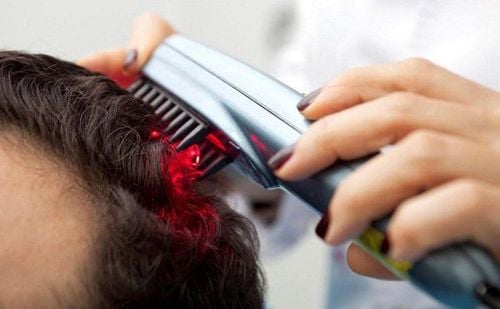
Liệu pháp laser được sử dụng trong chữa rụng tóc
4. Preventing hair loss through lifestyle and home remedies
You may want to try different hair care treatments to find one that makes you feel more satisfied with the way you look. For example, use styling products that add volume, color the hair, choose a hairstyle that makes the hairless part less noticeable. Use a wig or hair extension, or shave your head. These methods can be used to address permanent or temporary hair loss.
In addition, to prevent hair loss, you should pay attention to a reasonable lifestyle. Should get enough sleep, avoid stress for too long and stay up late, eat enough, should add foods fortified with necessary micronutrients such as: Foods rich in protein, vitamin A, omega-3, vitamin C. At the same time, combine the use of some natural hair care products such as: coconut oil, olive oil, grapefruit essential oil, etc. Regular physical activity, regular exercise and sports not only help the body. Healthy body, refreshing spirit, effective study and work, which is also considered one of the effective ways to prevent hair loss.
To have more beauty knowledge, regularly visit the website https://vinmec.com and book an appointment with top doctors and experts when you need advice.
Please dial HOTLINE for more information or register for an appointment HERE. Download MyVinmec app to make appointments faster and to manage your bookings easily.
References: Mayoclinic.org, Aad.org



